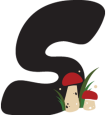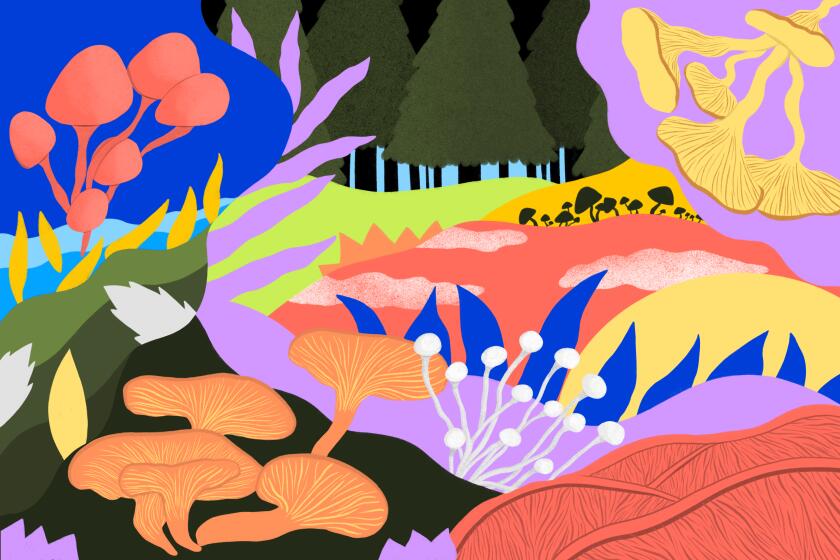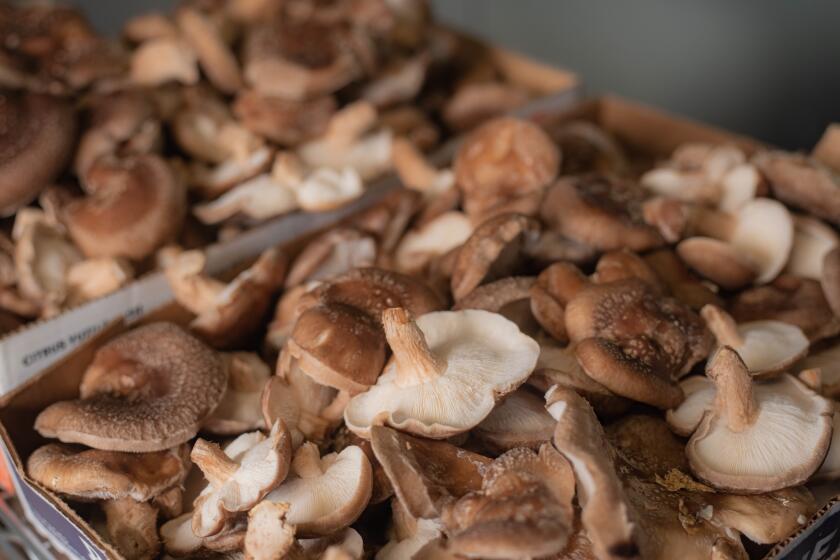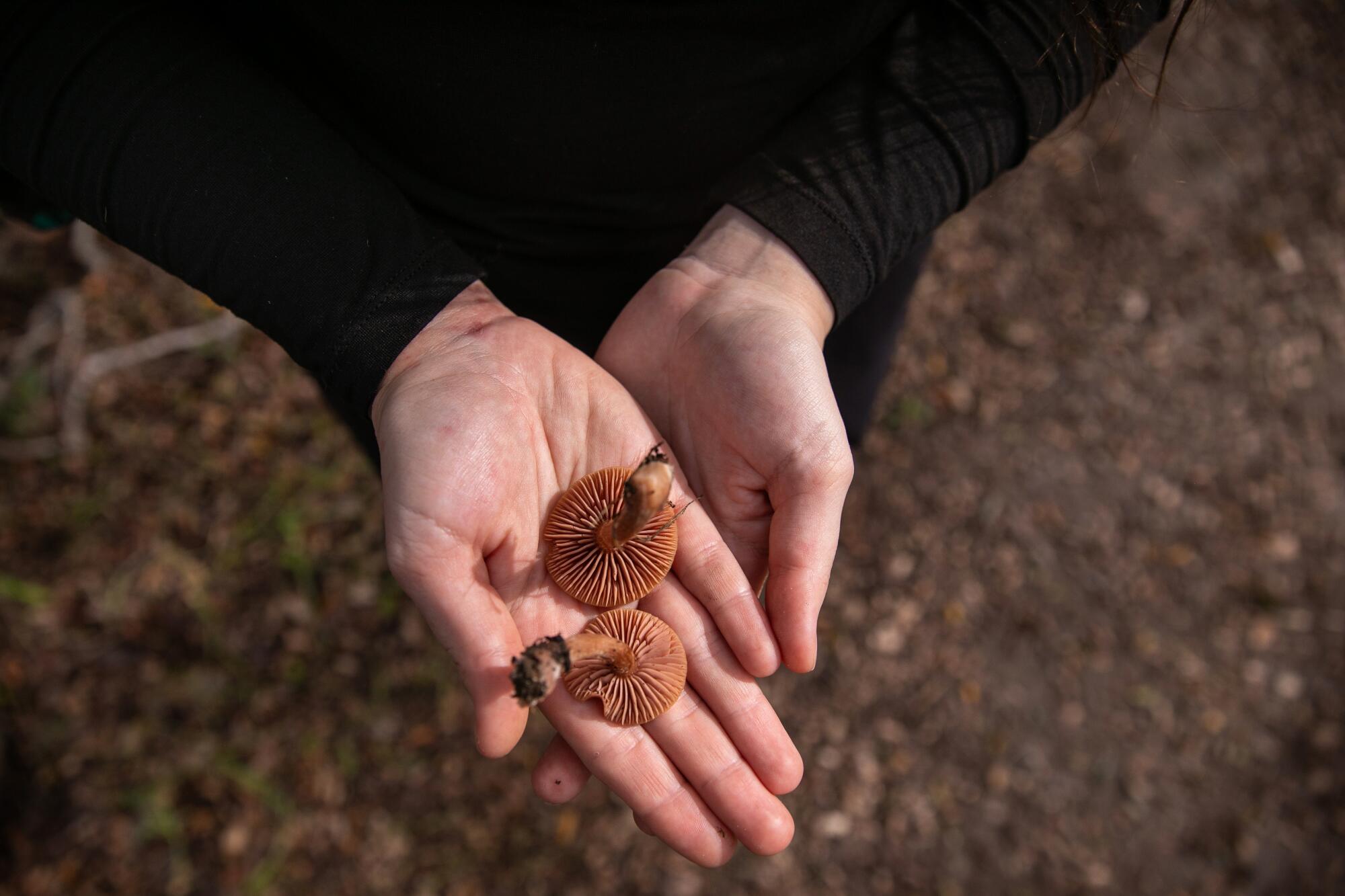
Southern California isn’t the most obvious place to forage for mushrooms. Mushrooms thrive in damp and dark places, a description that doesn’t always match the climate of drought-dried Los Angeles.
But during L.A.’s rainy season — from mid-October to mid-April — local mushroom lovers still hit the trails.
“This is an exceptionally good mushroom year,” said Bat Vardeh, the field trip chair for the Los Angeles Mycological Society, walking through the trails behind Canyon View Park in Aliso Viejo. “This is not common, just walking around and seeing mushrooms left and right.”
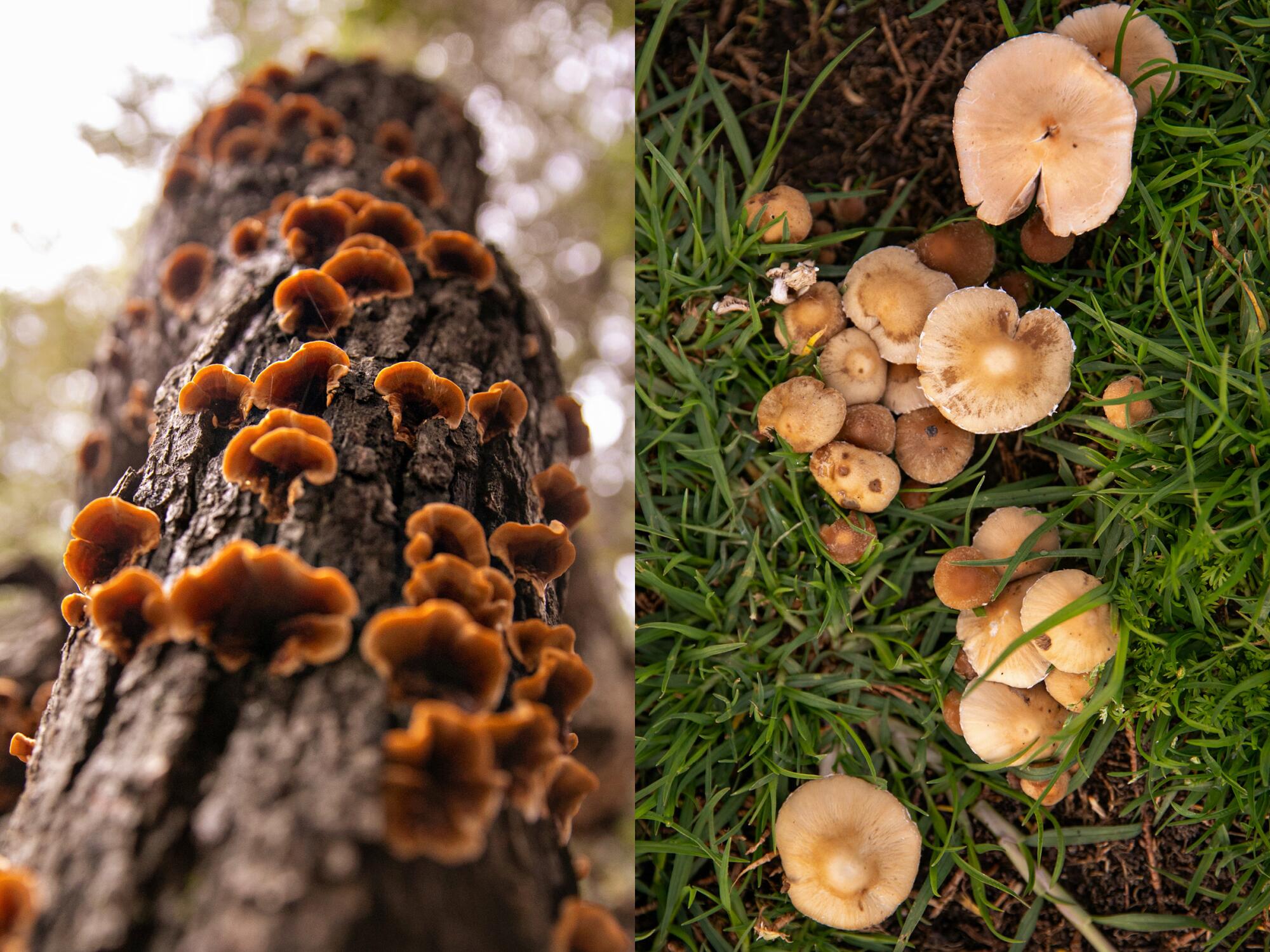
Vardeh, 26, essentially eats, sleeps and breathes mushrooms. When she’s not leading Mycological Society forays (group trips to identify fungi), she runs another group called the Foraging & Mushroom Hunting Women of SoCal and forages on her own to reduce food waste. Even when it comes to work, she’s hunting for ’shrooms.
Mushroom music experiments are mesmerizing TikTok. The funky beats offer a window into the mysterious fungi kingdom as our cultural interest in mushrooms spreads.
“Technically, I get paid to collect mushrooms for the fungal diversity survey,” she said. “I collect fungi that seem interesting and I send them in for DNA sequencing.”
For the last three years, both foraging and fungi have been on the rise. Creators like Alexis Nicole Nelson, who’s best known on TikTok as Black Forager, and William Padilla-Brown, who’s known on Instagram as Permaculture Papi, have drawn audiences with their tips and finds. The foraging hashtag on TikTok itself has more than 115 million views.
There are plenty of reasons why people enjoy foraging for mushrooms: Some forage for their own cooking and baking purposes, while others just enjoy the opportunity to get out of the house. One big draw for both beginners and experts is the challenge of exploring a field that still has so many unidentified species.
If you’re new to the foraging community, never fear. Here are some of Vardeh’s best tips and tricks for identifying and responsibly gathering fungi in the wild.
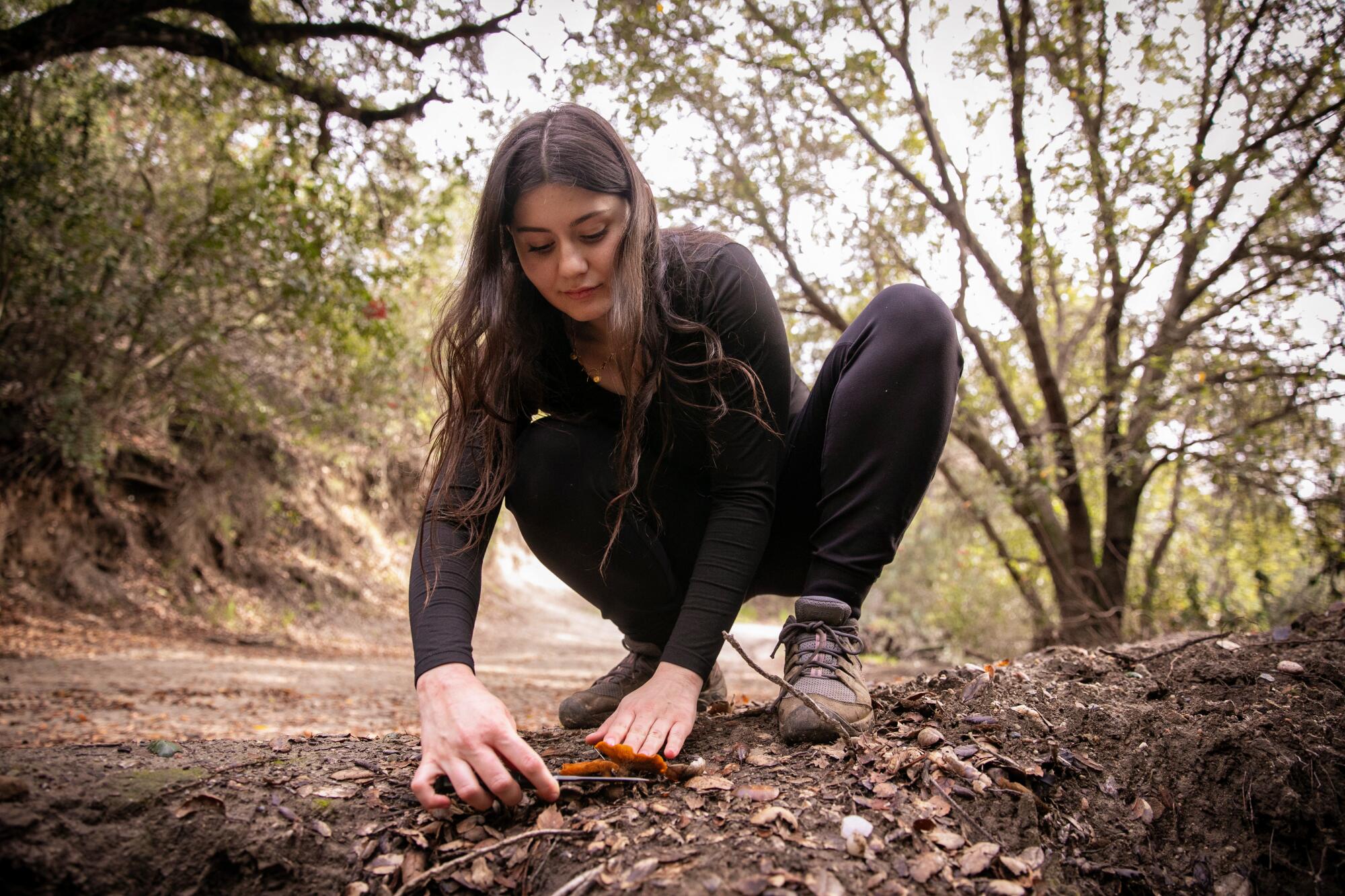

Go with the experts first
It’s advisable to start your foraging journey with some supervision. If nothing else, this will ensure you have someone verifying your mushroom identifications and bringing you to the safe trails. “There’s a lot of stuff that you might think you know, but until you have it confirmed, you won’t really know,” Vardeh said.
The Mycological Society organizes forays that are open to members (membership costs $25 annually) and some events that are open to the public, but parks like Griffith Park sometimes also offer forays that are open to anyone.
Growing mushrooms at home is more complicated than buying soil and seeds, but very doable with the help of premade kits. Here are expert tips on mushroom care.
Vardeh, who leads field trips and forays for several different organizations, said she always tries to ensure that newcomers feel welcome to participate. “I tell them all that it’s a no-judgment zone,” she said. “They can take any mushroom ID guess they want.
“I love getting a ton of people just really excited about mushrooms,” she added. “And then getting them hands-on with the mushroom so they can go home and think about it.”
Beyond just keeping people safe (which we’ll expand upon in a moment), Vardeh guides groups to fruitful spots and nurtures their curiosity.
“Look to your left and right,” she said as we wandered deeper into the woods. “There’s mushrooms everywhere already. Once your eyes land on them, you won’t stop seeing them.”
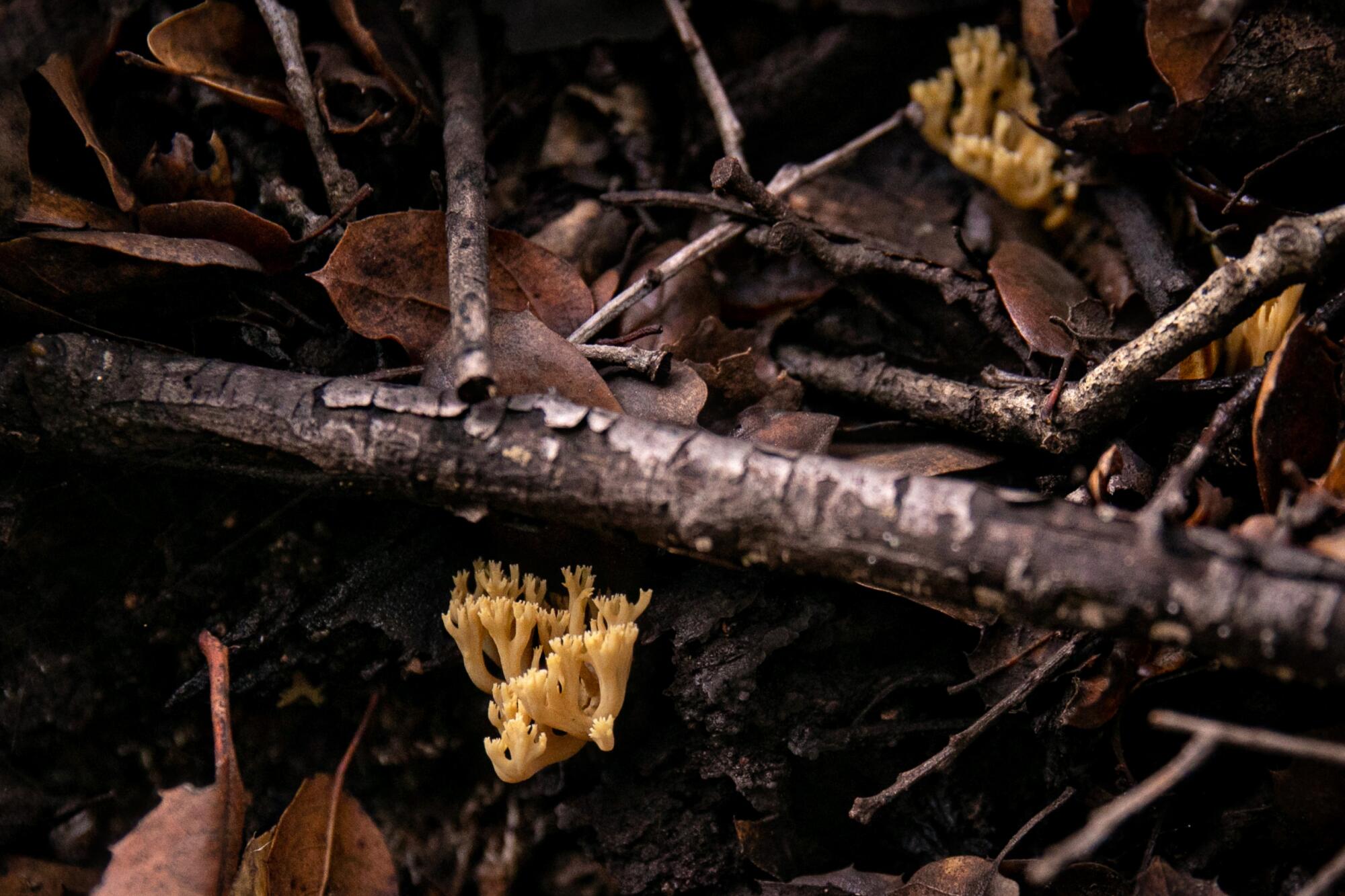

Look for the right plants
One tip that Vardeh gives new foragers is to look for plants that have symbiotic relationships with fungi. “Oak trees are like ‘X marks the spot,’ because there are so many mushrooms that have special relationships with oak trees,” she said. If it rained recently, you’ll very likely find a mushroom under the tree.
“Let’s look up here because some of these oak trees are really big and really old,” she said as we approached a large tree. “They have some dead branches on them that are still kind of hanging on. A lot of times you can find oyster mushrooms coming off of these.”
As expected, her advice was spot-on.
“We’re gonna get them. Yeah, we’re not leaving without them,” she said as we looked at a cluster of oyster mushrooms about 20 feet above us. “We’re gonna get a big stick. One person pushes; the other one catches.”
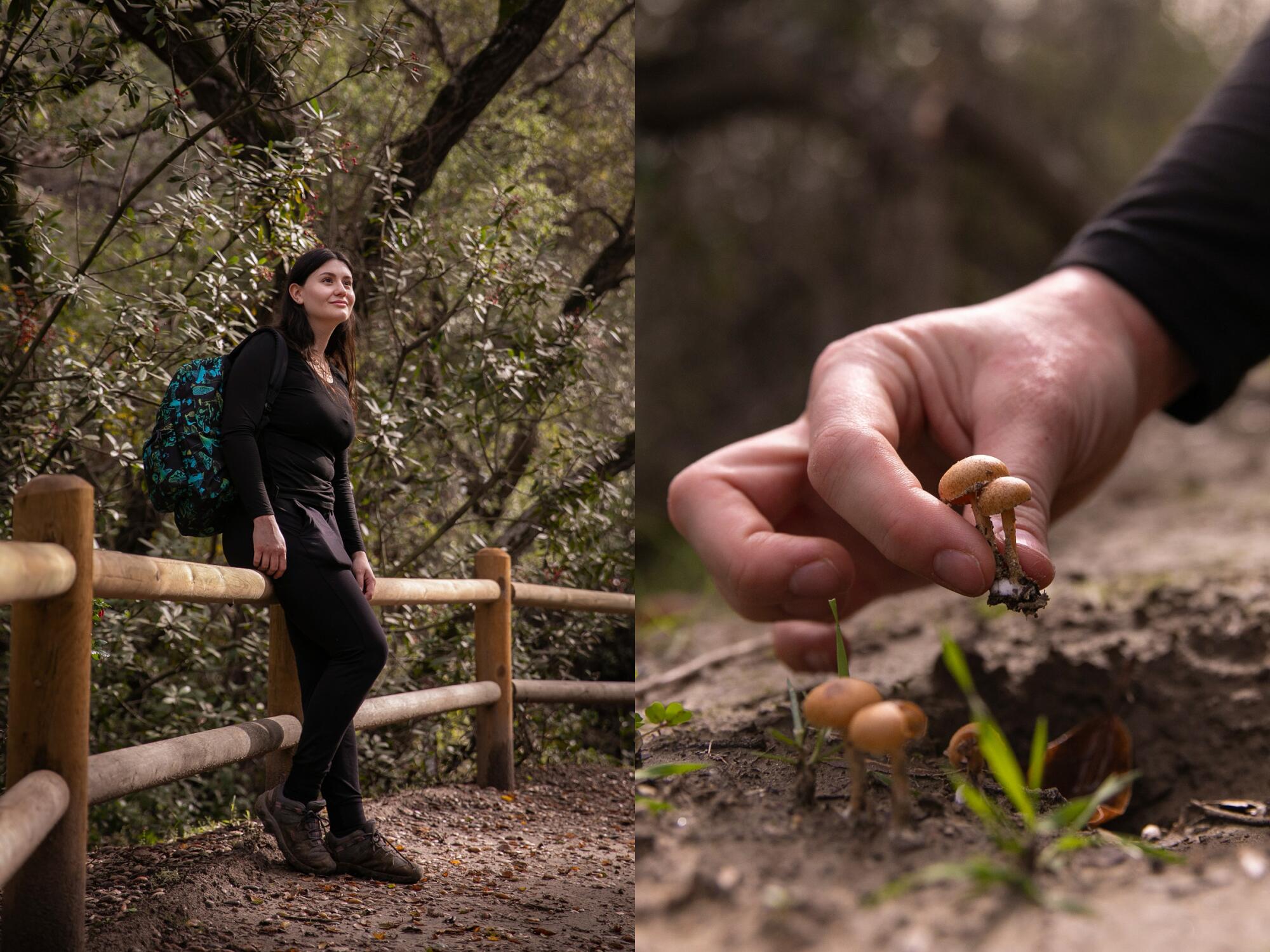
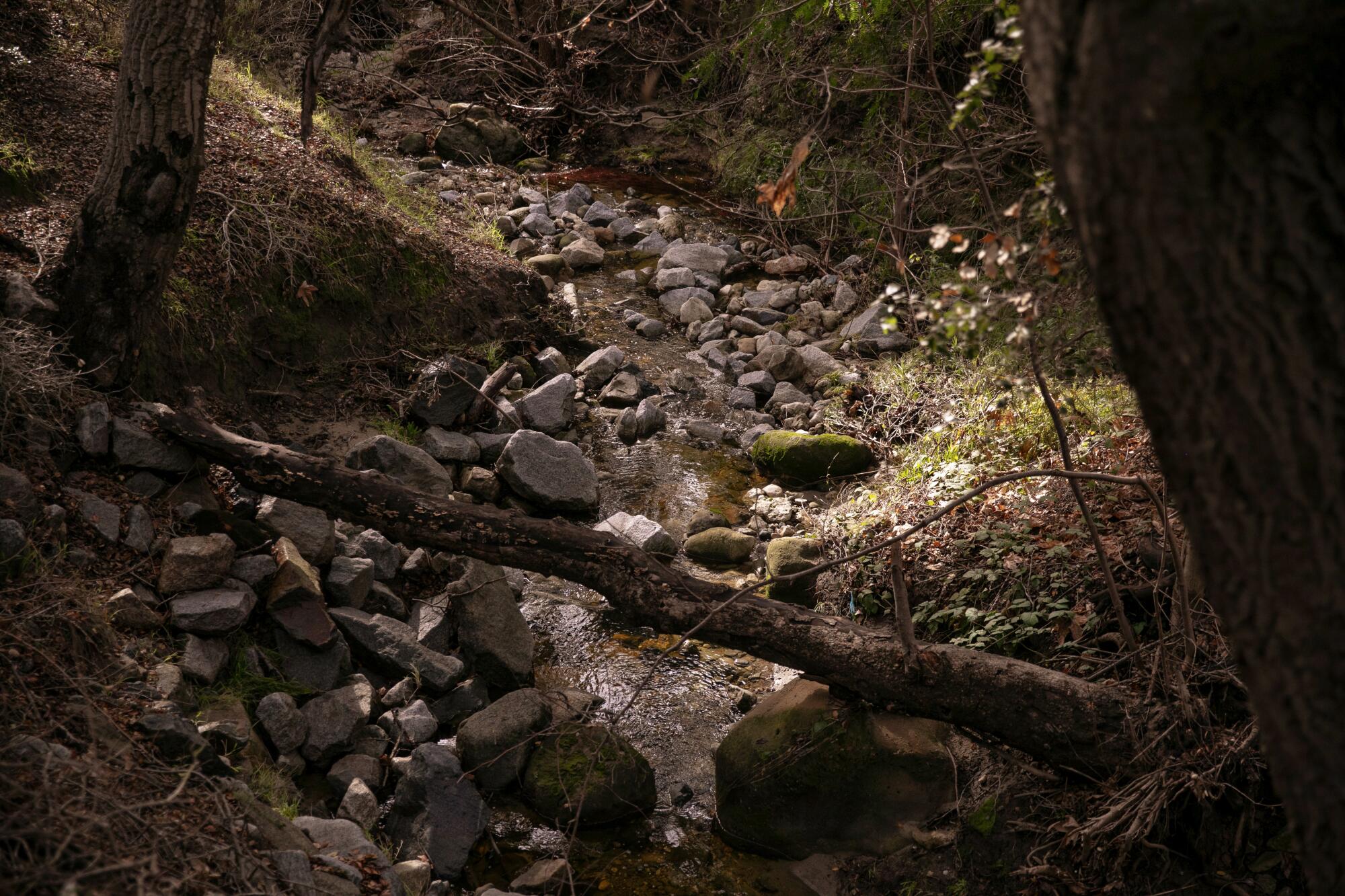
Vardeh suggests that new foragers in SoCal keep an eye out for common mushrooms such as coprinoids (inky caps), Leratiomyces percevalii (a woodchip-loving ’shroom), Agrocybe (found in grassy and wood-chip-heavy areas) and Agaricus fungi.
Agaricus is “really common to find year-round anywhere there’s irrigation and grassy areas, and a lot of those are edible,” she said. “But they’re also known as the ‘lose your lunch bunch,’ because edible ones look exactly like the not-edible ones, but the worst that they’ll do is make you throw up.”
After a good rain, Vardeh also recommends looking for Pleurotus ostreatus (oyster mushrooms, which grow on some hardwood trees) and Trametes versicolor (turkey tails, which some people like to brew into a tea).
If you’re lucky, you might even come across Vardeh’s favorite mushrooms to find: Lactarius rufulus, better known as candy caps. “They smell and taste like maple syrup when they’re dried,” she explained. “Candy cap cookies are very popular.”
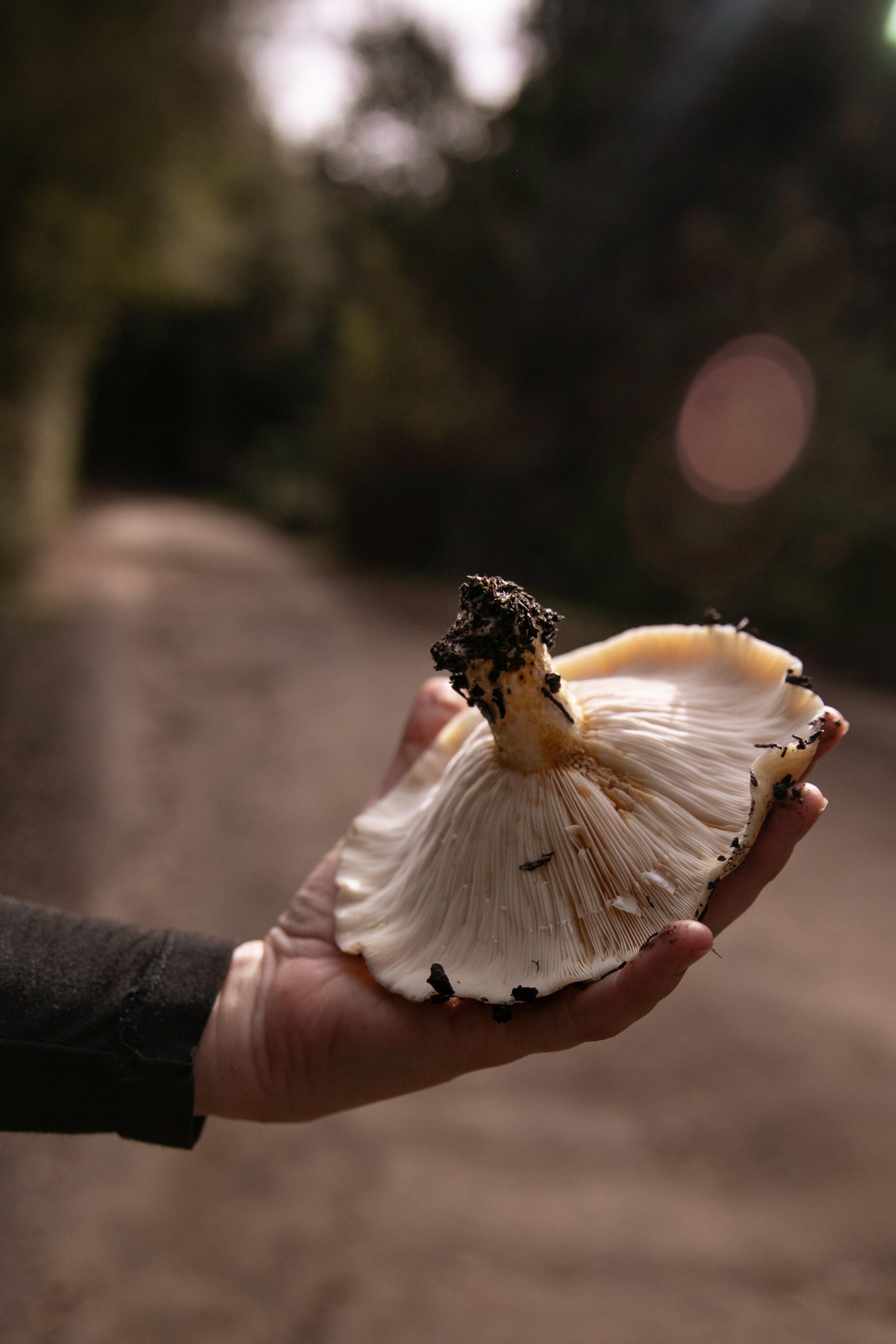

Take safety precautions
Vardeh uses the acronym BOLETE (yes, like the type of mushroom) to remind her foraging groups of what to keep in mind.
B: Be aware of your surroundings.
O: Only forage in areas where it is permitted.
L: Let someone know where you will be going.
E: Extra water and snacks.
T: Toxic lookalikes? Always make sure to double-check what kind of mushroom you found.
E: Eat only what YOU are 100,000% sure about. When in doubt, throw it out.
The last rule is especially important, since a few types of mushrooms are deadly when ingested.
“You can touch any mushroom,” Vardeh reassured. “In order for mushroom toxins to impact you, they have to be digested.”
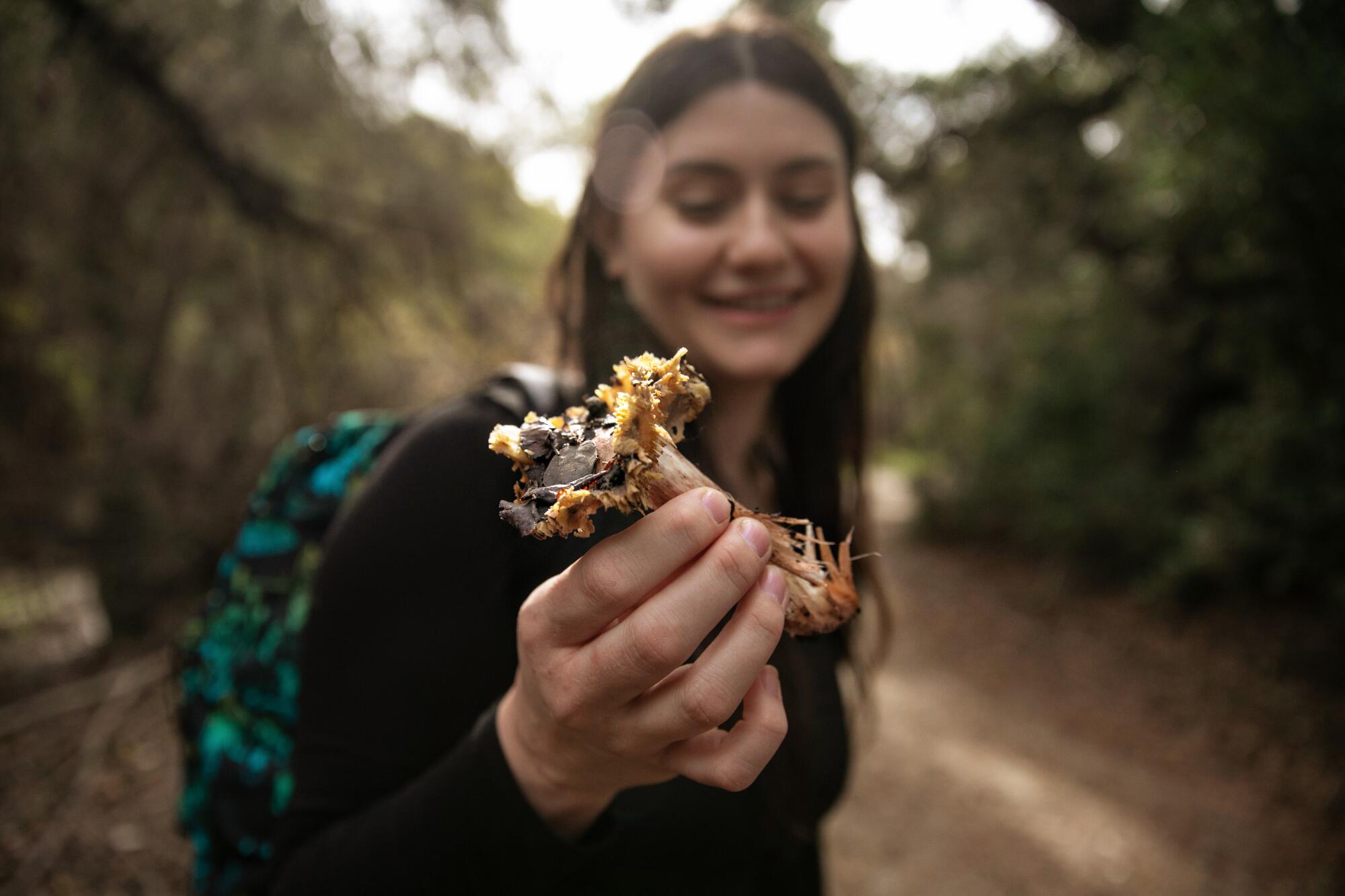
There are some general indicators that can help new foragers avoid poisonous mushrooms. Fungi with red caps or stems; mushrooms with white gills, skirts or rings on their stems; and any ’shrooms with a bulbous sack or volva are all worth avoiding. Some edible mushrooms are nearly identical to toxic ones, which is a great reason to err on the side of caution.
While you’re on the trails, it’s also essential to note where you’re grabbing mushrooms from.
“We have this thing that we call the dog pee zone,” Vardeh said, pointing to the edge of the trail. Plucking mushrooms from there would be similar to eating yellow snow: gross.
But bugs, for the most part, are not a concern.
“Mushroom hunters are very aware of springtails being in their baskets,” Vardeh said as she brushed away some small insects. “They don’t actually cause any harm. Some people are like, ‘I don’t want to eat bugs,’ but we’re all just like, ‘It’s extra protein.’”
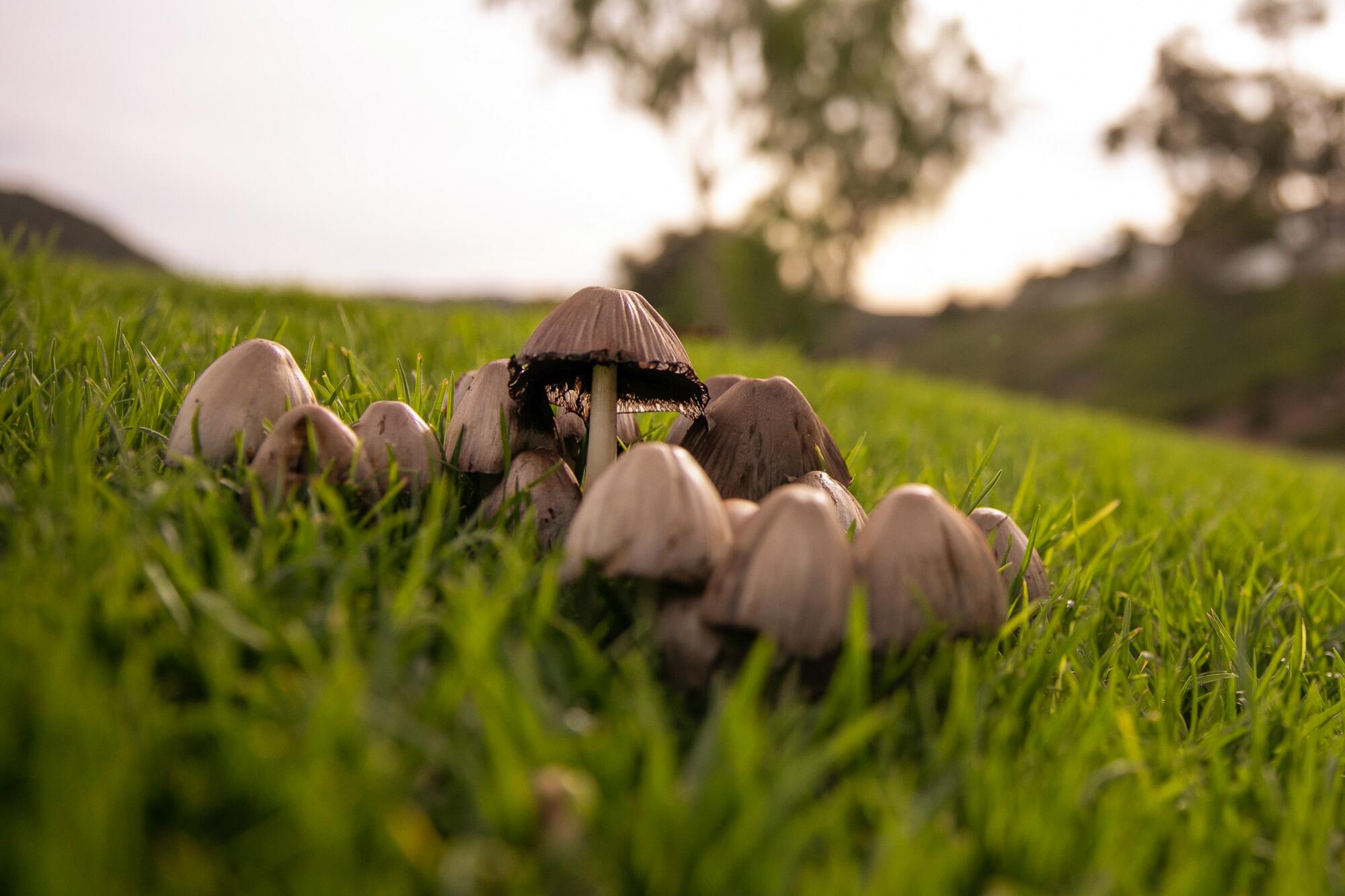

Bring the right tools and know the rules
Though it might sound obvious, it helps to show up prepared.
Vardeh recommends wearing a long-sleeve shirt and long pants since some of these trails have poison oak and other itchy plants nearby. She also recommends bringing ample water, snacks and some reusable containers in which to stash your finds.
Reading up before you hit the trails also can be helpful. Vardeh’s favorite book for beginners is “All That the Rain Promises and More…” by David Arora. (For more advanced foragers, she recommends “Mushrooms of the Redwood Coast” by Christian Schwarz and Noah Siegel and “Mushrooms Demystified” by Arora.)
She also recommends joining iNaturalist, a social network for naturalists and scientists. “When somebody takes a photo of a mushroom and posts it on iNaturalist, it shows the location where it was found and has an algorithm that gives you a suggestion as to what it thinks it is,” she explained. “But then, it publishes it for experts — like really mushroomy experts — to take a look at these and then tell you what you have.”
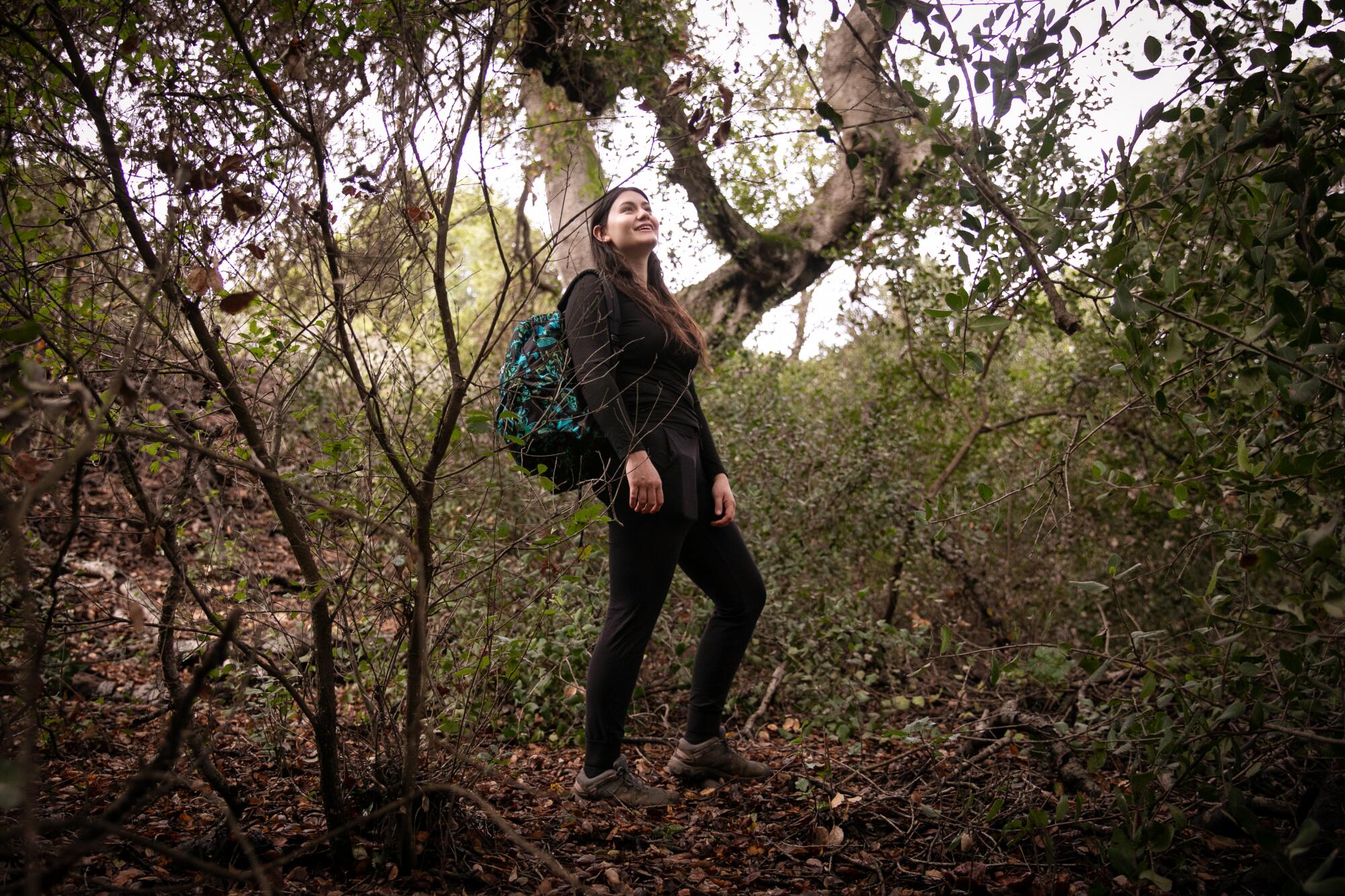
Though you can observe mushrooms and fungi anywhere you please, each park and forest has different policies when it comes to taking anything home with you.
Cleveland National Forest, Los Padres National Forest and Angeles National Forest are three of Vardeh’s favorite places to forage. Most of the national forests advise visitors to limit “collection of edibles, such as mushrooms and berries, to what you can consume during your visit,” but it’s worth checking specific guidelines with rangers at each park.
“For the most part, as long as you’re being ethical and conscious of your harvest — basically not out there to pick the forest clean and sell them — national forests are OK with foraging,” Vardeh said.
And if you’re just curious to look around and take photos, most public parks are also fair game.
“This area’s really amazing because Southern California is not like this,” Vardeh said as we explored Canyon View Park. “It’s normally uncommon to find more than a couple of different species, but we’ve already found a ton of different species and we haven’t even scratched the surface.”
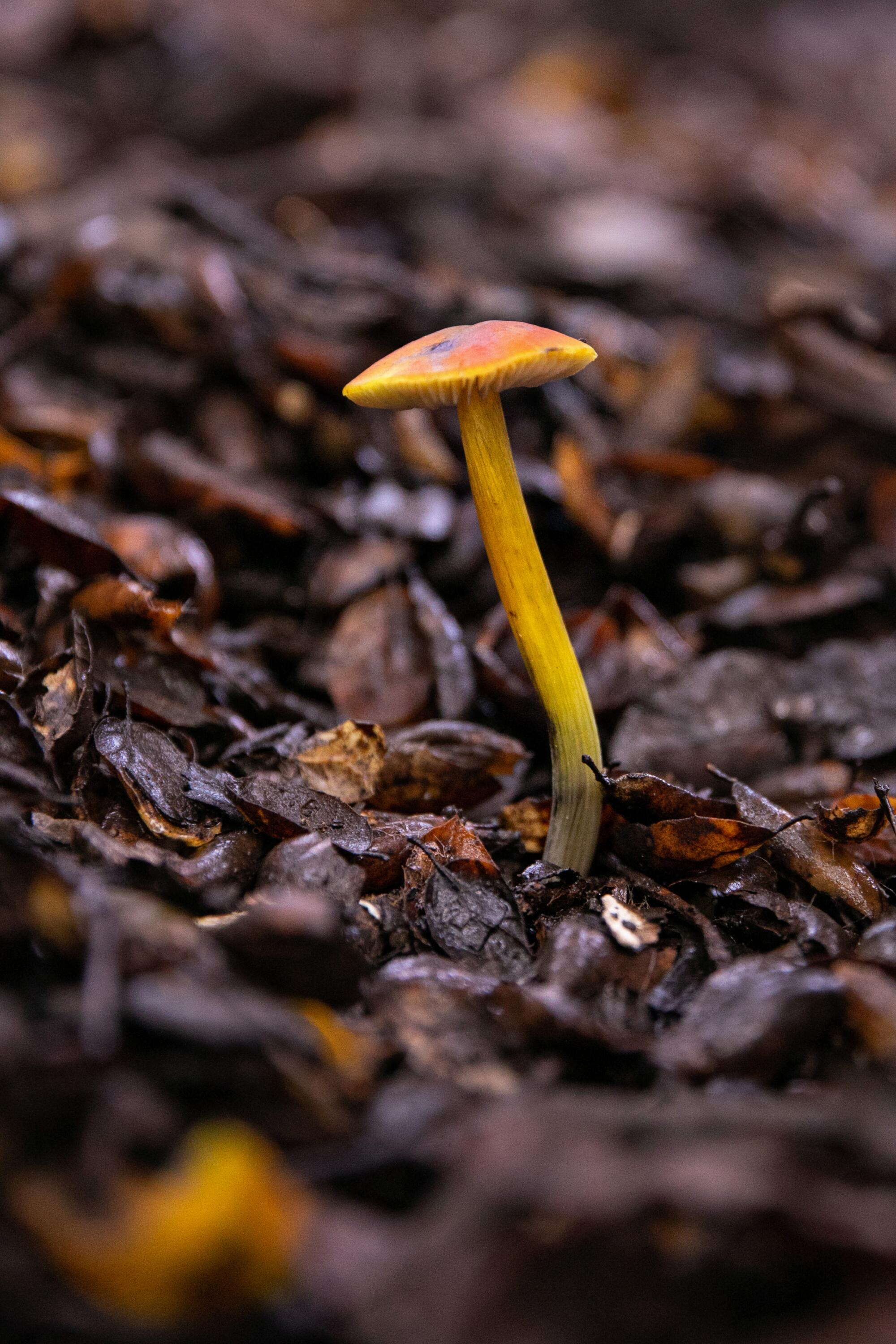
More to Read
Sign up for The Wild
We’ll help you find the best places to hike, bike and run, as well as the perfect silent spots for meditation and yoga.
You may occasionally receive promotional content from the Los Angeles Times.
